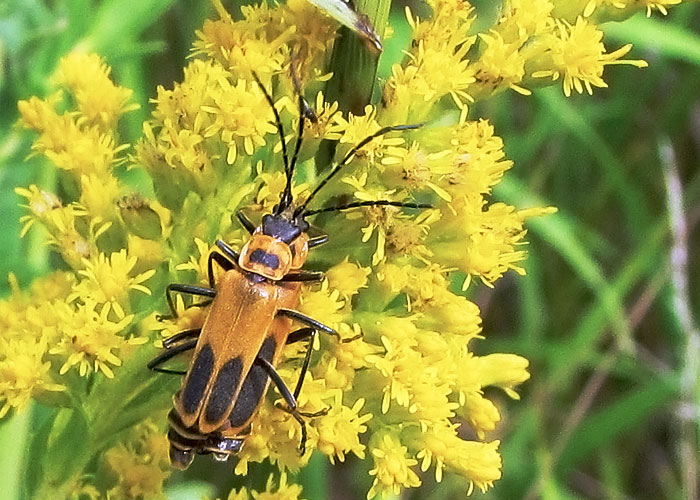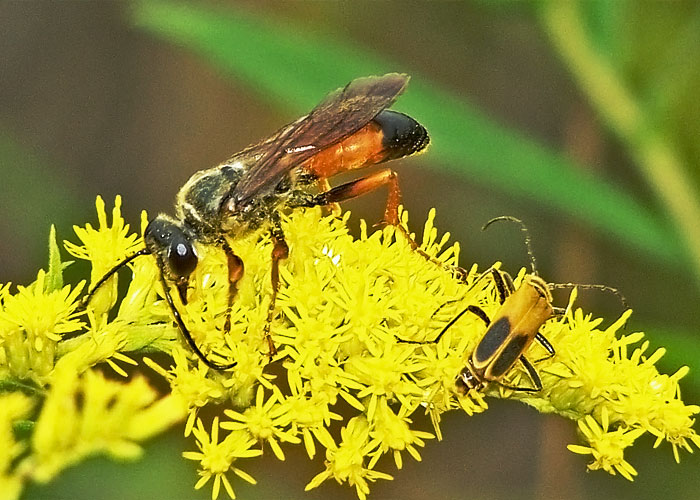Howdy, BugFans,
Goldenrod Soldier Beetles, also called Pennsylvania Leatherwings (PLWs) (Chauliognathus pensylvanicus)* are among the most common members of the Soldier Beetle family, Cantharidae, in the Midwest. They were once classified with the closely-related Lightening beetles (LBs, of previous BOTW fame) and they find it beneficial to mimic LBs because LBs have poisonous blood that oozes from the base of their wing covers. PLWs have their own “super powers”—both the adults and the larvae share the ability to produce “defensive chemicals” via glands in their abdomens.
[metaslider id=6007]
Pennsylvania? They’re common throughout the East, not limited to Pennsylvania. Leatherwing? Their elytra, the usually hard, front pair of wings that protect the flying wings beneath, are uncharacteristically soft and flexible. Soldier? The soft, cloth-like wing covers of some species sport bright colors/stripes that remind (some) people of soldier’s uniforms.
Adults are found in mind-boggling numbers on the flowers of roadsides and old fields in late summer and throughout fall, almost always in the company of another PLW. Or three. The BugLady’s references seem divided about the food habits of adult PLWs. Some put them squarely in the vegetarian column eating pollen and nectar (Donald W. Stokes, in A Guide to Observing Insect Lives, says that, to this end, their mouthparts come equipped with an extra part made for lapping nectar from flowers). Others put them in the carnivore (small insects) or the omnivore (pollen, nectar and small insects) category. They are harmless to humans. The spectacular wasp that is sharing the goldenrod with a PLW is a Great Golden Digger Wasp (or a close relative). She herself eats nectar, but she makes an insect collection for each egg she lays, stuffs it into a cell she creates, deposits an egg on/near its future food, and then closes up the cell. The leatherwing is probably not a potential target, and its coloring, the stripes on its abdomen, and its flower-top foraging habits may fool some critters into thinking PLWs are wasps.
Long, dark, bristly-velvety larvae hatch from clusters of eggs that are laid in the soil, and they are unequivocally carnivorous, hunting for grasshopper eggs, small caterpillars, slugs, snails and beetles (especially cucumber beetles) on the ground, in decaying wood, and on plants. Larvae spend the winter in the soil (although the literature contains tantalizing allusions to masses of larvae crossing the land, looking for a warm place to overwinter, along with the advice to caulk your foundations). Wherever they land for the winter, they wake up when the soil warms, and keep on eating. They eventually pupate in cells they create in the ground. PLWs seem to be effective as a biological control on pest insects, and they are valuable pollinators, too. In their adult and larval stages, they provide meals for birds, bats, spiders, ground beetles, and other small predators.
If the BugLady had a dollar for every PLW she saw during August and September, she would be posting BOTW from someplace with palm trees. And sand. And beach umbrellas. And 3″ cockroaches.
The BugLady

